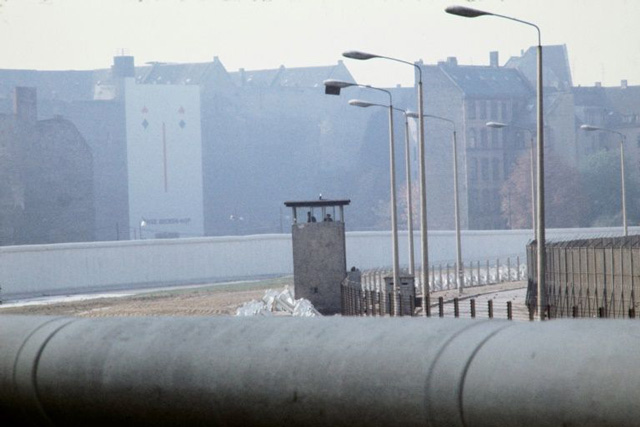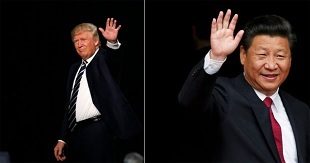
Paris, France | AFP | The Iron Curtain was at first an ideological and then a physical separation of communist Eastern Europe from the West from the 1940s after World War II.
– The name –
The term “iron curtain” was popularised after it was used by former British prime minister Winston Churchill in a landmark speech at Westminster College in Fulton, the United States, in March 1946.
“From Stettin in the Baltic to Trieste in the Adriatic, an iron curtain has descended across the continent,” declared Churchill, then leader of the opposition Conservatives.
His comments were seen as an opening salvo in the Cold War, which opposed the Soviet Union and the West for more than four decades.
The term had been coined earlier. Russian writer Vasily Rozanov, in his 1918 book “The Apocalypse of Our Time”, wrote “an iron curtain is being lowered, creaking and squeaking, at the end of Russian history.”
– A physical frontier –
The ideological barrier between Soviet-controlled Eastern Europe and the West gradually became a physical one spanning thousands of kilometres (miles).
To stop their citizens from fleeing to the West, the Soviet-dominated Eastern countries began erecting various forms of barriers using barbed wire, ditches and concrete walls.
The separations were controlled through alarms, watchtowers, mines and soldiers.
Socialist Hungary put up the first section in 1949, building a 260-kilometre (160-mile) barbed wire fence along its border with Austria.
– Berlin Wall –
The Berlin Wall was the most famous section of the Iron Curtain and became its symbol.
n 1952 Soviet-satellite East Germany constructed a 10-metre-wide (39-feet) barbed wire buffer along the entire length of its border with West Germany.
However people were still able to cross over in the divided city of Berlin, with about three million fleeing the East via this route between 1952 and 1961.
To stop this important loss of manpower, East Germany in 1961 began constructing a wall within the city.
Made of reinforced concrete and wire mesh, the Berlin Wall stretched for 155 kilometres. It had a heavily controlled no-man’s land on the eastern side.
– Escape attempts –
Eastern European citizens were only allowed to visit the West under strict conditions and those who tried to cross over without permission did so at great risk.
About 600-700 people died trying to escape East Germany, at least 136 at the Berlin Wall, according to historians.
Around 5,000 people made it out, however, often using innovative means.
One man crossed via a wire cable shot by bow and arrow from the roof of a building to a relative on the other side.
Others escaped by swimming across Berlin’s Spree River, via tunnels, or by hot air balloon.
– Iron curtain crumbles –
The first crack in the Iron Curtain appeared in May 1989 when Hungary decided to start opening its border with Austria.
On August 19 the frontier was to be symbolically opened for a few hours for a Pan-European Picnic.
More than 600 East Germans holidaying in Hungary at the time took advantage and fled to the West. It was the first massive exodus since the 1961 construction of the Berlin Wall.
Soon afterwards Eastern Europe’s communist regimes started to tumble.
East Germans began to demonstrate, and on November 9 the regime unexpectedly granted them the right to travel to the West freely.
Thousands flocked to the wall, and disoriented border guards opened the checkpoints. Through the night euphoric Berliners celebrated, perched on the wall.
Then they used pickaxes to knock out chunks.
Within two years the Soviet Union had imploded, the Iron Curtain falling with it.
 The Independent Uganda: You get the Truth we Pay the Price
The Independent Uganda: You get the Truth we Pay the Price



